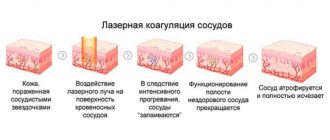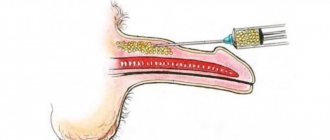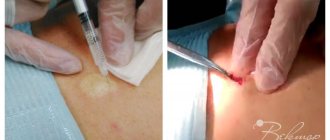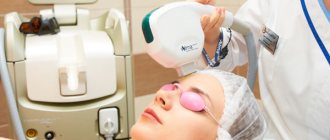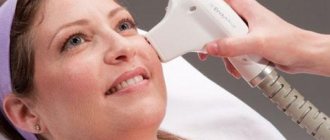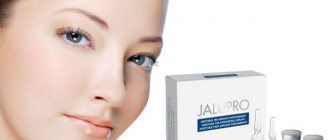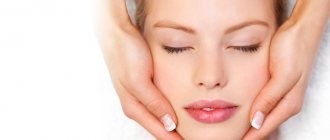First of all, you need to understand what vaporization is? This is a cosmetic procedure based on the principles of temperature and mechanical action on the skin of microscopic droplets of water, sprayed under pressure. The purposes of the procedure are different. Therefore, the cosmetologist introduces additional ingredients into the water. These can be herbs or essential oils.
How does vaporization work?
It is, first of all, designed to cleanse the skin, warm it and remove dead cells. Vaporization also helps get rid of comedones. Under the influence of warm water, increased sweat separation occurs and blood flow in the skin tissue is stimulated. And this leads, in turn, to the resorption of acne. In addition, vaporization increases skin elasticity and reduces the feeling of fatigue.
Like any other procedure, vaporization has a number of contraindications. After all, its effect is quite significant and it can provoke responses from the body.
Vaporization is strictly contraindicated for people with heart disease, as well as asthmatics. The presence of certain dermatological diseases, such as very dry skin, rosacea, rosacea, eczema, are absolute obstacles to the vaporization procedure. Especially if they are in the acute stage.
What is vaporization: from the ancient world to the present day
Vaporization – treatment of the face with special steam. In its simplest form, this procedure was known back in Ancient Egypt. There, beautiful Egyptian women steamed their faces over vessels of hot water. The result was not long in coming: the skin became smooth and velvety, and all imperfections seemed to evaporate with boiling water. This secret traveled to different countries, but did not receive wide distribution.
Everything changed in the 19th century, when the beauty industry suddenly became interested in the magical properties of steam. This happened in the wake of the increased popularity of public baths among representatives of the middle class. During water procedures, women began to notice that under the influence of steam, the skin became more beautiful for a long time. This suggested to cosmetologists the idea of local exposure to steam on the face. The procedure was based on the principle of a Russian bath using dense hot steam.
Now vaporization is a popular procedure in almost every salon. The basins with water were replaced by a vaporizer device. It is designed quite simply: a special compartment for liquid, a water heating element and a nozzle with a hole for steam to escape. Under the influence of temperature, the liquid evaporates, and the patient’s face is treated with the resulting steam.
Vaporization is equally effective both as a separate procedure and as a component of complex measures.
Preparatory stage of the procedure
Laser ablation of prostate adenoma in the Yusupov Hospital is carried out after a comprehensive examination of the patient, which allows minimizing the risk of complications. Doctors prescribe the following tests:
- General and biochemical blood test;
- Coagulogram;
- Analysis of urine;
- Ultrasound examination of the prostate gland;
- Ultrasound examination of the heart;
- Chest X-ray;
- Electrocardiography.
After receiving the examination results, the patient is consulted by a therapist. If general anesthesia is planned, the patient is examined by an anesthesiologist on the eve of the operation. He chooses the method of pain relief and drugs for anesthesia. Tests are carried out to determine the tolerability of agents used for local anesthesia.
2 days before surgery, doctors stop taking medications that contain aspirin. 8-10 hours before the intervention, the patient stops eating. 2 hours before the procedure he is given a cleansing enema. After cleansing the intestines, the patient is prohibited from drinking water.
Types of vaporization
As we already mentioned, vaporization has improved significantly since ancient times. Innovations affected the principle of its execution. Now there are three types of procedures, depending on what the surface of the skin is treated with. So, vaporization happens:
- Cold. It is based on cold steam treatment. This procedure is suitable for patients who do not tolerate exposure to high temperatures.
- Ozone. The skin is steamed with ozone steam. The advantage of this type is its bactericidal effect. Ozone steam treatment will especially appeal to those with oily and problematic skin.
- Hot. This method exactly repeats the effect of a bath - cleansing of toxins and a healthy complexion are guaranteed!
Advantages of vaporization in medical
The essence of the procedure is the thermal effect of the laser on pathological areas. This is how internal and external hemorrhoids are removed. The laser beam practically “cuts” and cauterizes tissue in a jewelry-like manner. If the internal node is burned out from the inside, connective tissue forms in its place. And the laser cuts off the external nodules. In this case, the blood vessels are sealed, so bleeding does not develop.
Medical provides laser therapy for hemorrhoids in Krasnodar. The offices of proctological surgeons are equipped with modern equipment for effective treatment and comfortable recovery of patients.
Our doctors regularly undergo internships and improve their skills, so they perform microsurgical operations at a high level.
Vaporization has the following advantages
:
- There is no need for hospitalization. The operation is bloodless and painless. During the rehabilitation period, our patients do not experience discomfort;
- The center's doctors provide psychological comfort throughout the treatment. This is one of the main principles of their work. They relieve nervous tension in patients by prescribing sedatives;
- Vaporization is one of the safest treatment methods in terms of infection.
Indications and contraindications
As a stand-alone procedure, vaporization is suitable for those who have tired, dull or dull skin. Steam treatment will return the face to a fresh look and smooth out shallow wrinkles. In short, vaporization alone can solve only minor problems. Much more often it is used as a preparation for more serious procedures: a nourishing mask, massage, peeling or facial cleansing. Warm steam helps open the pores, which means nutrients penetrate deep into the epidermis.
The procedure cannot be performed if the client:
- dry and sensitive skin - in this case, infatuation with steam leads to dehydration;
- there are diseases of the cardiovascular system: hypertension, arrhythmia, etc.;
- exacerbation of chronic skin pathologies;
- the functioning of the respiratory system is disrupted.
When is laser vaporization of hemorrhoids used?
- External hemorrhoids stages 1, 2, 3;
- Internal hemorrhoids stages 1, 2, 3;
- Combined hemorrhoids stages 1-3.
Not in all cases, stage 3 hemorrhoids are suitable for the use of medical lasers; in each case, the proctologist individually considers the feasibility of using the method.
Stage 4 hemorrhoids, as a rule, cannot be treated with laser vaporization. At this stage, it is advisable to radically remove large nodes using a scalpel or laser (without evaporation, but using a laser scalpel). Vaporization can become a complementary technique for eliminating concomitant pathologies.
Five tips for making the procedure more effective:
- The vaporizer needs to be prepared, for this it is turned on 20-25 minutes before the start of the session;
- steam treatment should be carried out with smooth and uniform movements;
- do not come into contact with the device: the distance between the client and the vaporizer must be at least 40 cm;
- during the procedure you need to treat the face from bottom to top;
- The procedure interval is no more than once every two weeks.
Normally, vaporization should not cause any discomfort in the client. If you experience the slightest discomfort, you should immediately inform your cosmetologist.
How is the vaporization procedure performed?
It is recommended to carry it out in a salon (vaporization at home can lead to unpleasant sensations and even burns). Before starting this procedure, the cosmetologist treats the patient’s skin with a special nutrient solution or cream to prepare the epidermis for the cosmetic process. Application takes about 5-7 minutes to allow the beneficial substances to be absorbed into the skin.
To carry out the procedure, a special device is used - a vaporizer. It is this device that emits steam with which the treatment is carried out. During the procedure, the face steams and profuse sweating begins. When there is too much moisture on the face, the skin is wiped (wetted) with a clean towel made of natural material. Then steam treatment occurs again. The process is repeated until fatty and greasy traces disappear from the skin. Washing with cold water and applying a special tonic to the face is the final stage of the procedure (with this, the dermis is toned and “tightened”). Sometimes cream is applied to the skin and a facial massage is performed.
Pros and cons of vaporization
The procedure undoubtedly has many advantages:
- absence of allergic reactions;
- normalization of sebum production;
- stimulation of lymph flow;
- expansion of pores for subsequent cleaning;
- efficiency;
- painlessness;
- low cost, etc.
Even the best procedure has its critics. All negative reviews of vaporization are associated more likely with the unprofessionalism of the cosmetologist than with the specifics of the procedure. Thus, customers claim that steam treatment leads to skin dehydration. In part, this is fair. However, if you treat oily or problematic facial skin in this way, critical loss of moisture will not occur.
Another argument against vaporization is that the procedure makes the skin loose and wrinkled. And you can’t argue with that either! If the procedure is carried out too often, then as a side effect you can actually get pallor and a couple of new wrinkles. Let us remind you that the optimal frequency of the procedure is once every 14 days.
Rehabilitation period
Since laser vaporization is a minimally invasive procedure, neither hospitalization nor a long hospital stay after it is required. However, some restrictions still exist. To avoid having to urgently contact a proctologist, over the next 2-3 weeks after the procedure you must:
- Avoid visiting bathhouses, saunas, beaches and other places with high air temperatures.
- Do not lift heavy objects or perform sports activities that involve significant stress on the lower body.
- Replace regular toilet paper with soft paper napkins.
- Take sitz baths regularly.
- Pay special attention to anal hygiene.
- Change bandages in a timely manner.
Meet the Vaporizer
This is what is also called a facial steaming machine. And they are portable and stationary. For home use, only the first option is suitable, but for a cosmetologist’s office, both are good. Of course, for a more serious and impressively sized professional stationary device, the price will be higher. But it will be a floor-standing device on a tripod with a wide range of functions, which can be installed in the most convenient place and in the best position.
Why do you need a vaporizer? He will help:
- steam the skin, opening pores and softening comedones;
- disinfect your face if necessary;
- saturate cells with moisture;
- improve blood circulation;
- Give your facial skin an aromatherapy session.
In short, this cosmetology steaming device makes it possible to prepare the skin for cleansing with minimal time and maximum efficiency. When working with a facial steamer, the skin becomes softer, toxins are released from the cells, and it becomes easier to rid the face of blackheads and pimples.
Laser installations in proctology
More than half a century has passed since the first attempts to use lasers in medicine. Installations with coherent radiation (lasers) began to be used since 1965 - these were carbon dioxide lasers. Nowadays lasers are not uncommon in large medical centers and private clinics; their characteristics are significantly optimized and highly specialized for certain types of manipulations. Types of lasers are usually distinguished by the media that generate the laser beam: carbon dioxide, neodymium, ruby, alexandrite, etc. Their depth of penetration and absorption of radiation is different, which determined the areas of use of the devices. Low-intensity devices are more often used in cosmetology and physiotherapy - they enhance tissue repair processes, their blood supply, and activate metabolic processes. For surgical interventions, other effects are needed - coagulation (sealing of tissues and blood vessels at high local temperatures), ablation, hyperthermia (intense heating).
Laser units most often used in surgery are devices with high-intensity exposure (more than 8 J/cm2):
- Neodymium lasers - their modification using a KTP crystal is very much in demand in vascular surgery, gynecological, oncological, urological operations for deep tissue coagulation;
- Holmium - a wide range of applications, incl. endoscopic surgery;
- Erbium lasers - with a minimum penetration depth, are used in ophthalmology (for operations on the cornea), dentistry, dermatology;
- Diode lasers have many wavelength and radiation ranges, they are compact and are often used specifically for tissue vaporization during surgical interventions.
Ask a Question
